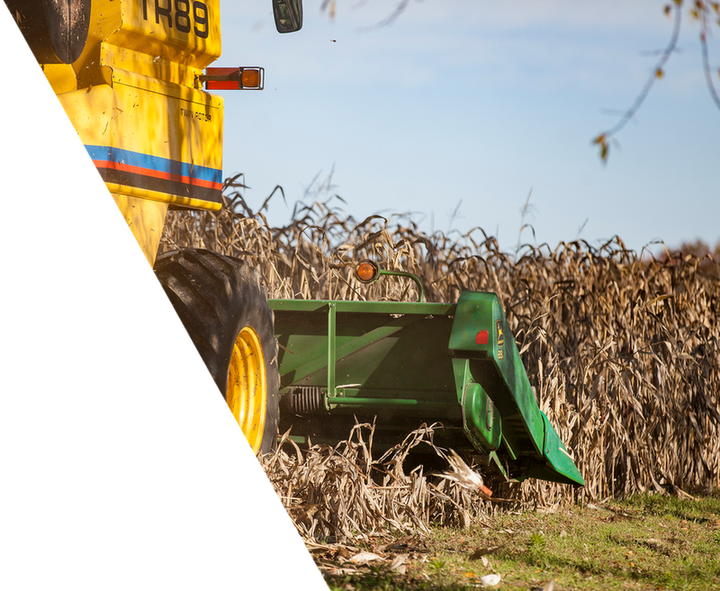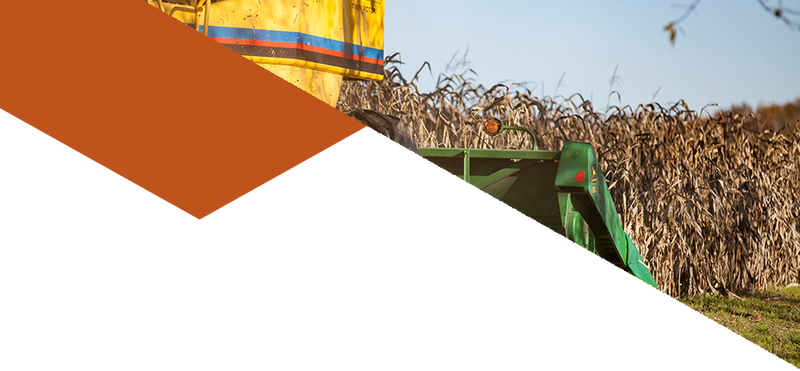





From the field:
Dr. Art Schaafsma explores how to manage mycotoxins
Over the past two years, silage from across the U.S., Canada and Europe has shown high levels of mycotoxins. Climate change and feed storage practices have their share of responsibility in the range of molds occurring in farm feedstocks.
But with traditional tilling and crop rotation practices diminishing in developed countries, modern crop production techniques are also contributing to mold contamination persisting year-on-year.
To better support both livestock and grain producers as they prepare for the next growing season, Alltech Crop Science (ACS) had the chance to discuss managing mycotoxins from the field with Dr. Art Schaafsma, a researcher at the University of Guelph, Ridgetown Campus, in Canada.
With a Ph.D. in crop protection, Schaafsma has been involved with field crop pest management at Ridgetown for more than 30 years. His main area of emphasis and research has been mycotoxins in both maize and wheat, looking at agronomic practices, sampling, detection and how to deal with mycotoxins along the value chain.
What are the best practices to mitigate the risk of mycotoxins from the field, during planting, growing or harvesting?
Schaafsma: Mycotoxins are really complicated to manage, and it takes a multifaceted approach and several tools to address them. The typical rotation after wheat is maize, and wheat does not seem to be as large a source of inoculum as maize. This is seen often in minimum till and no-till systems, as there is a lot of maize residue left.
Some pork producers use wheat as a way to manage mycotoxins. They will grow both maize and wheat and hope that one of those crops is clean, and they will mix them if one is not as clean. They prefer maize, but if it is a bad year, then they will sell the wheat.
Also, pay attention to hybrid selection. Look for hybrids that are less susceptible to mycotoxins. You want to look for a hybrid that will mature on time, because if you push the hybrid, you can increase the risk of mycotoxins forming. In wheat, it’s much the same for variety selection.
The crop is most susceptible to the fungi that produce mycotoxins during flowering, for both maize and wheat. To help combat this, producers should use a fungicide spray. The only group that is available are the triazoles to control Fusarium on both maize and wheat, and it is very important to get the timing right and get good coverage.
In maize, it is important to control western bean cutworm and other pests that can contribute to furthering the risk of mycotoxin contamination.
When it comes to harvest, some producers have started to take their wheat or maize off earlier so that they can then dry it. By controlling how fast the grain dries, they can try to stop the infection.
During the growing season, what are the most common visible signs of mycotoxin contamination?
Schaafsma: In wheat, it is a bit easier to see the signs of deoxynivalenol (DON) because you look for head blight symptoms. These symptoms include the spikelets looking bleached. In maize, however, it is a bit more difficult because there are a number of different species of Fusarium, and not all of them produce mycotoxins.
The main mycotoxin we deal with is DON. You can tell if you have DON if you have white mold accompanied by a purple or pink color anywhere on the cob. It is always better to test the grain, especially if you see any pink, purple or white mold. Green molds and black molds are not associated with mycotoxins.
Many people worry about toxins increasing during storage, but DON won’t increase if maize is stored below 18 percent moisture. However, this is when the mycotoxin zearalenone (ZEN) can be produced.
Zearalenone is a late-season toxin, and there is an increased risk of it if the crop is late to harvest, stored incorrectly or not dried quickly enough. DON needs warm conditions to keep growing; ZEN can form under cooler and damper conditions.
Are there certain types of mycotoxins that become more prevalent based on the type of growing season? For example, if it is a very wet year, do you see more DON versus in a dry year?
Schaafsma: Depending on the type of conditions you may be experiencing, you could get different types of mycotoxins contaminating your maize or wheat. For example, DON forms in a moderately warm temperature, the optimum being 28 degrees Celsius, and if there is a lot of rain, DON can become a big issue. Also, in the summer, when we sometimes get foggy mornings but the rest of the day is warm, DON can be an issue.
DON is a complicated type of toxin and has several forms. Most producers tend to use an enzyme-linked immunosorbent assay (ELISA) to check for DON in their crops, but it only measures a few forms of DON, not all of its forms. The other forms are just as toxic.
DON can also sometimes be masked or hidden. This happens when DON is conjugated with a sugar and is then overlooked by an ELISA test. Therefore, sometimes you may run an ELISA test and think there are no problems but later discover a mycotoxin.
Fumonisin, another type of mycotoxin, shows up when there is heat stress, with drought and low- to mid-30s degree Celsius weather. ZEN does not show up in wheat because it is too warm during flowering, as wheat heads out in June or July. However, it does show up in maize in the fall.
One toxin that producers should be aware of is T-2 toxin. T-2 is related to a late harvest, and we find it regularly in maize that is left in the field too long and when maize lodges. The danger with this one is that it is 10 times more toxic than DON.
Where will the next advancements come from in reducing and protecting against Fusarium-produced mycotoxins?
Schaafsma: In maize, we are working on a sustainable way to manage western bean cutworm. I would like for there to be an incentive for farmers to grow less susceptible hybrids. This may happen soon because other end markets that buy a lot of maize are getting frustrated by mycotoxins as well.
It is not only livestock producers who should be looking at their maize in this way. More often now, there is a penalty applied for how much DON is brought into the processing plant. Awareness is growing and will lead us to change.
In wheat, the industry continues to improve the genetics. There is more progress in managing mycotoxins in wheat than in maize, and we can now manage it reasonably well in wheat.
